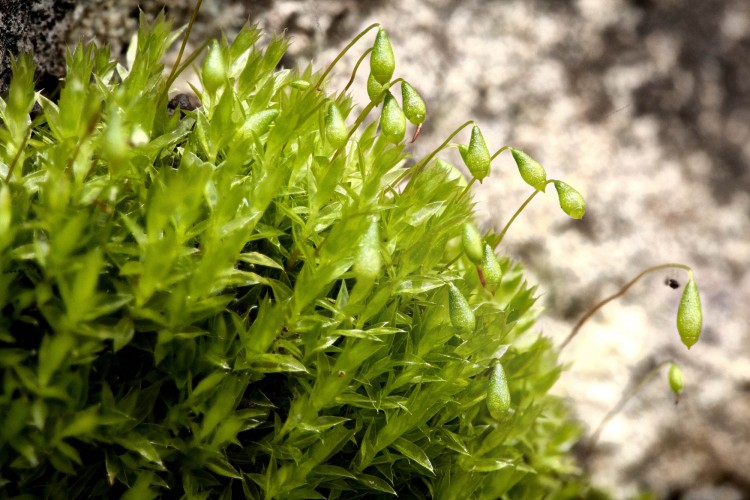Bryum caespiticium

Bryum caespiticium at Greenville Falls State Nature Preserve, Miami County, Ohio. May 4, 2014.

Bryum caespiticium at Greenville Falls SNP. May 22, 2014.

Bryum caespiticium at Greenville Falls State Nature Preserve, Miami County, Ohio. May 4, 2014.

Bryum caespiticium at Greenville Falls State Naure Preserve, Miami County, Ohio. May 4, 2014.

Bryum caespiticium at Greenville Falls State Naure Preserve, Miami County, Ohio. May 4, 2014.

Bryum caespiticium at Greenville Falls State Naure Preserve, Miami County, Ohio. May 4, 2014.

Bryum caespiticium at Greenville Falls State Naure Preserve, Miami County, Ohio. May 4, 2014.
How to recognize Bryum caespiticium: These small erect plants grow in dense tufts; the leaves are 2-3 mm long, and dense mats of papillose rhizoids (filaments that help hold the plants in place) grow below the tufts. This moss forms crowded clumps of leaves at the upper ends of the stems . The leaves are slightly twisted when dry. The leaf margins are revolute and indistinctly bordered, and the costa extends beyond the leaf tip into an awn. One of the characteristics of all the Bryum species is several rows of longer cells on the leaf margin. Under the microscope the basal cells are abruptly quadrate to rectangular, along the costa. The rhomboidal cells in the rest of the leaf are 12-18 microns wide. It rarely is found with small spherical red rhizoidal tubers 100-200 microns or deciduous brood branchlets in axils of leaves at tips of stems. It is very similar to Bryum lisae var. cuspidatum, but that moss is different in that the male and female organs are mixed together in the same cluster of leaves. Bryum caespiticium has separate male and female plants so it is not often found with capsules, unless both kinds of plants are present.
Where to find Bryum caespiticium: This moss is found on bare soil, rotten wood, rarely on rocks, common in disturbed sites and sometimes in full sunlight.

